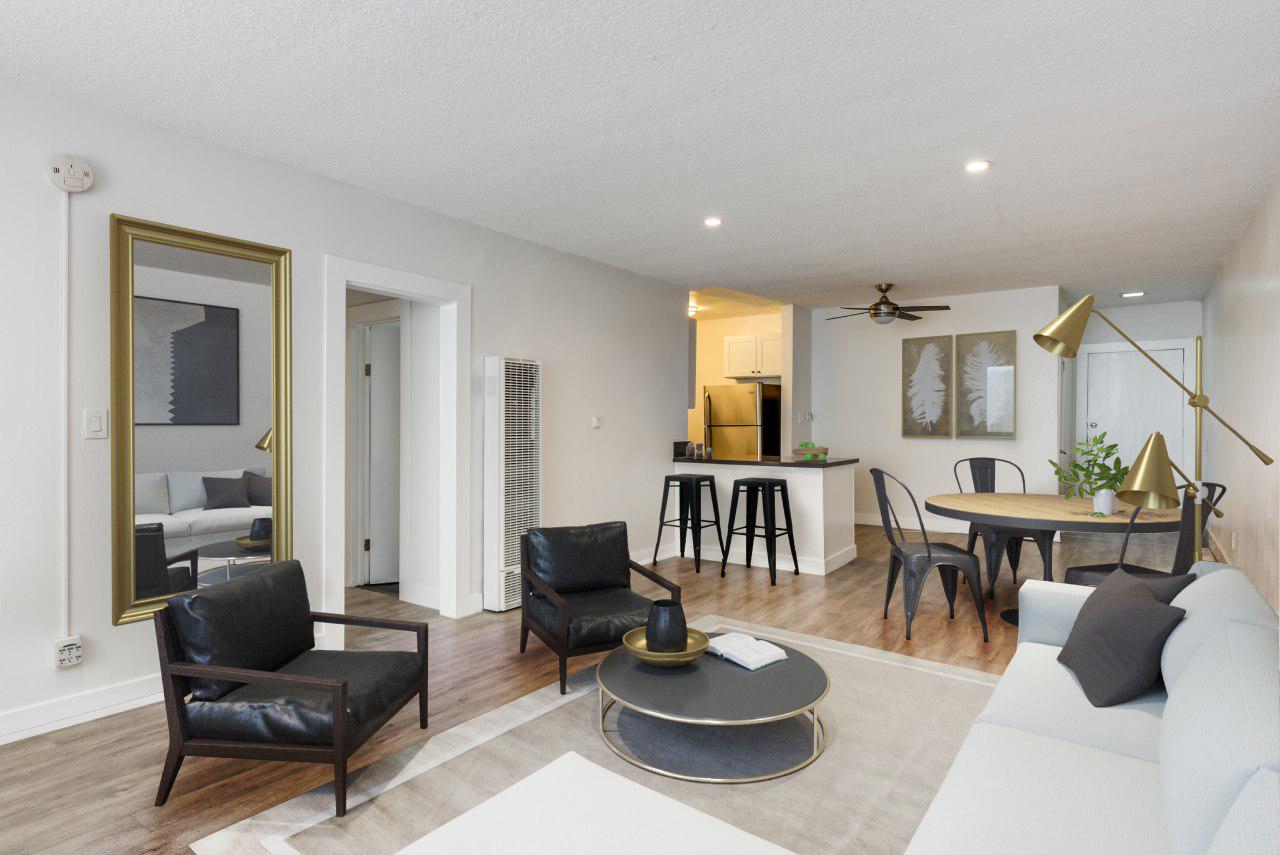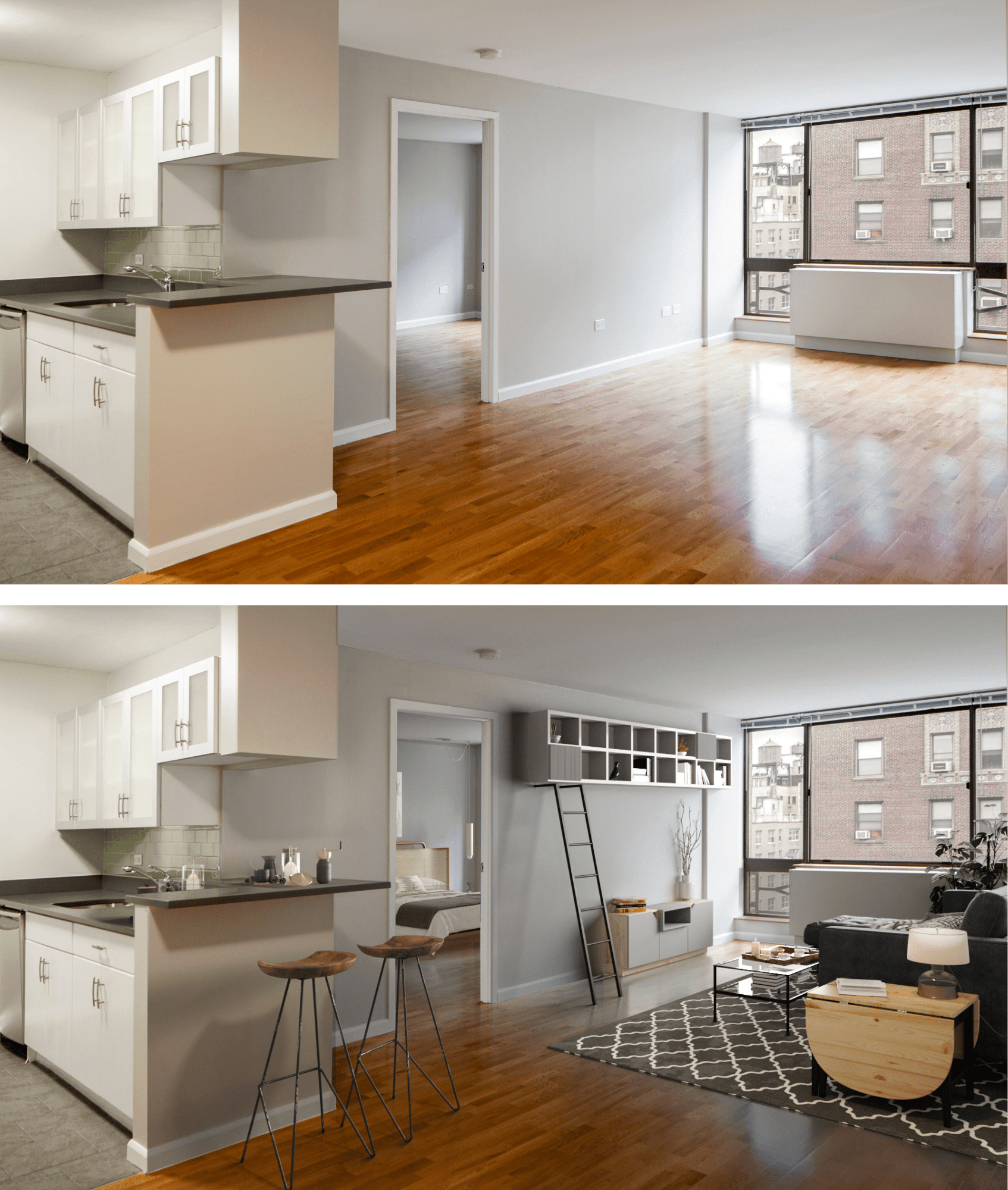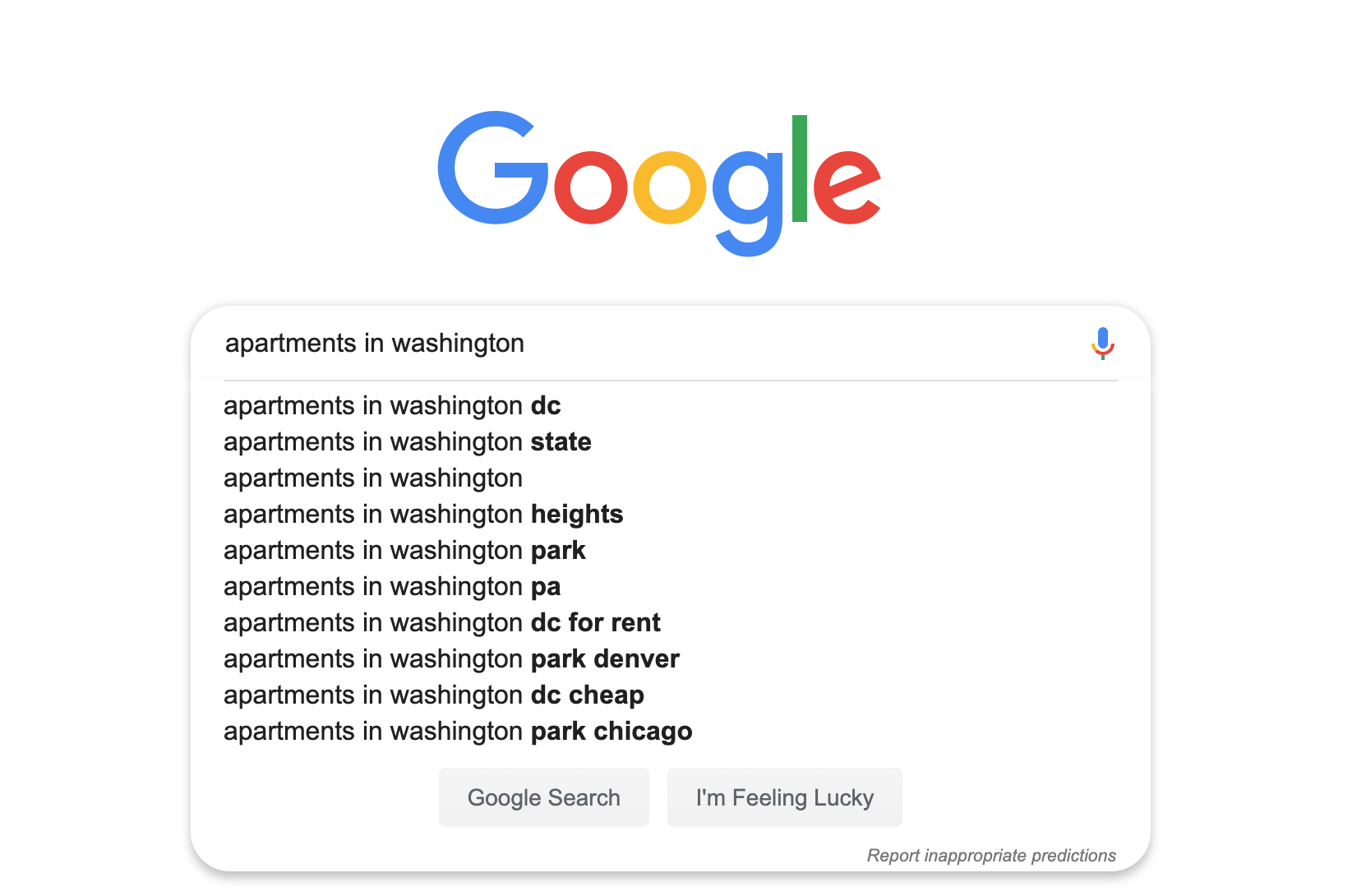3 Multifamily Tech Trends to Watch in 2019
The multifamily market continues to expand into new and untapped territories. Most multifamily marketers are probably scratching their heads,...

Multifamily and senior housing marketers are always looking for cutting-edge technology to stand out on real estate listings. They know that photographs are a priority when it comes to renting out units, but good photography demands much more than a professional photographer and a DSLR. It requires staging, hours of consulting and working within ownership guidelines.
If budget and time allowed, multifamily providers would hire professional home stagers all the time. The reality is that budgets are tight and time is limited.
Thankfully, virtual staging services have become more than just a quick-fix to budget concerns in multifamily and senior housing particularly. Virtual staging in real estate is the ultimate marketing tool which stretches across various facets of these industries.
Before we get started, it’s important to understand what virtual staging is. Virtual staging in real estate is the process of taking a photograph of an empty room or space and showcasing what that area would look like with digital 3D furniture and decor. As it relates to marketing, it’s the process of showcasing the home’s best qualities and highlighting flow of space and layout. With the right design, marketers can also target specific markets based on the area the community is in (i.e. upscale New York City or a more hipster, Downtown Seattle-vibe).
The end goal is to rent units faster and sometimes even at higher rates.
Many management companies don’t have the budget (or time for that matter) to coordinate with a professional stager. With virtual staging, they can digitally enhance photographs of an empty apartment unit and use across marketing channels to speed up lease velocity.
Below is an example of virtual staging to give you a better look at the digital enhancements involved.

Virtual staging attracts renters to listings. Empty model units aren’t as photogenic or exciting to look at. Outdated photographs of old tenant furnishings aren’t as attractive on listings either.
According to The National Association of Realtors, 77% of agents believe staging a home helps people better visualize themselves living there. While actual staging will never go away completely, virtual staging is a powerful tool that assists searchers on their journey when looking for the perfect home.
77% of agents believe staging a home helps people better visualize themselves living there.
With virtual staging, you get the best of both worlds. Not only does your marketing acquire photorealistic virtually-staged units, vacant photographs may also be included on your listing to give renters a look at the space for what it is along with the enhanced photos.
The negatives that result from virtual staging tend to come with the kind of software your virtual staging provider is using. You want to seek out a virtual staging company that creates high-quality, photorealistic digital enhancements that look like the real thing. Some virtual staging services produce cartoon-like images that look fake and unnatural. While you want to be completely transparent about a space, having unnatural, cartoonish furniture can be a turn-off to renters.
If done right, virtual staging in real estate will use 100% realistic shadows and lighting, natural placement, and life-like furnishings that look tangible.
Not quite. It can be, if done wrong.
Transparency and honestly are incredibly important in real estate. So it's no surprise that it's a common worry among agents and property managers that virtual staging is deceiving. Which is real estate professionals often stray away from virtual staging to avoid deceiving buyers or renters.
The truth is, virtual staging services should never change walls, floors, cabinets or any construction elements in the photo. All finishings should remain 100% untouched.
Virtual staging should only showcase furnishings to be more attractive to renters on listings, just as you would with actual staging. It should help them see themselves in that space, not mislead renters in order to close a sale.
To be frank, virtual staging isn’t a quick fix for renovations or repairs. Typically, 3D artists designing virtually-staged units will not edit or stage walls, flooring, or replace lighting fixtures that already exist. Just as with actual staging, virtual staging is a marketing tool. It’s just that. And it’s important to maximize on it.
The beauty about virtual staging is that it’s 100% digital. It's an asset that can be used in both print and online, including:
Maximizing on virtual staging means more than just maximizing on all marketing channels.
It’s actually quite good for your bottom line. It means no more actual staging is needed. No more long hours required for consulting. No more consultant fees. No need to move staged furniture in and out on a busy leasing day. And it means no more model units sitting there, missing out on that monthly rental income.
Virtual staging in real estate, especially for multifamily providers, is a win-win.
| Related: How to Save Hundreds of Thousands of Dollars with Virtual Staging
Virtual staging statistics show that it can have huge cost savings compared to traditional staging. Actual staging will definitely be useful if you show off model units in person. As we know, in-person tours are incredibly important. Virtual staging, however, solves the problem of keeping all of your units on the market through digitally-enhanced photographs used in marketing.
The fact of the matter is, more and more apartment communities are opting to show off empty units to save money on staging and enhance their listings with virtual staging.
As we mentioned before, if you’re opting for virtual staging, look for results that are photorealistic and look like the actual thing.
Great virtual staging costs can range anywhere from $100 to $300 per photo. This ultimately depends on the service and quality you’re receiving.
In the grand scheme of things, actual staging can cost thousands of dollars. So a few virtually-staged photos will cost you less than half of what it would cost to actually stage your units.
The big question of them all: what is the return?
As long as you maximize on your staged photos in marketing and invest in high-quality virtual staging, the results are pretty impressive. Virtual staging is a one-time investment without any consulting fees. The kicker is that you can also keep all of your model units on the market, which means you acquire that monthly rental rate that would otherwise be lost.
To know if virtual staging is the right decision for your apartment homes, look at your budget and marketing resources. What does your on-site team’s time look like? Ask yourself what kind of impact it may have on your bottom line.
Virtual staging offers plenty of benefits in real estate. Not only does virtual staging build up your marketing collateral, you’re saving money (and making money) in the process.
Contact us today to get a free demo and walk-through of our virtual staging services.
The multifamily market continues to expand into new and untapped territories. Most multifamily marketers are probably scratching their heads,...
![20 Multifamily Marketing Ideas [Updated for 2020]](https://www.lcpmedia.com/hubfs/Interactive%20Stacking%20Plan.png)
As the multifamily market continues to shift and evolve, strategizing your multifamily marketing efforts each year becomes a new challenge.

Today, 90% of millennials access the internet. Of those who go online, 55% use search engines to learn about companies or products.